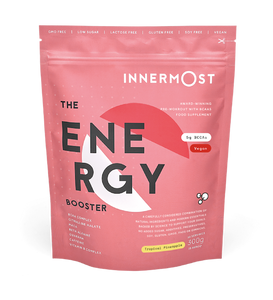Who doesn't love to swim? Splashing about in the sea or in a pool is relaxing, rejuvenating, and of course, very good for you. But are you using a good enough swimming technique for it to viably improve your fitness levels? If not, you should be. You should also be implementing The Energy Booster into your daily routine for an extra energy boost, FYI.
Research suggests that 98% of recreational swimmers don’t make gains in aerobic fitness despite swimming regularly, so improving your swimming stamina is key in improving here.
Looking for tips for swimming faster, include your stamina and reduce that race time? Here are some ways to improve your swimming technique so much you'll be cutting through the water like a dolphin in no time at all.
- Adjust your body position
First and foremost: your body should be always parallel with the surface of the water. Fixing your body position to make yourself more streamline is one of the key ways to improve your swimming stamina.
Keep your body flat from head to toe by strongly engaging core. Keeping your head down makes you more streamlined, which also helps you to go faster.
As you swim, your body should rotate lengthways (i.e. rolling from side to side). This help you to extend your reach and engages your back muscles to power your stroke. Rolling your body will also help you to turn your head to breath and lift your recovering arm out of the water ready for the next stroke.
- Think about your distance
Try to travel as far as you can with each stroke. By making longer strokes, you’ll need to take fewer strokes per length, and therefore save energy overall. To improve your stroke, make each part of your stroke more efficient by pulling harder and taking your time.
Don’t try and kick faster as the legs only provide 20% of propulsion in front crawl, and are really only there for balance. A good way to assess your stroke progress is by counting your stroke rate, or the number of strokes per length.
- Think about the mechanics
The best swimmers can 'hold' more water and so push their bodies further forwards with each stroke. To improve your hold, move your hand with your fingertips down from the front of your stroke to the back.
Do this slow to fast.
A great analogy for this action is rolling your hand over a beach ball and then flinging it behind you. Keep your hand close to your body as you pull back to increase your streamlining. Turn your legs into fins by kicking from the hips, keeping your legs taut but ankles floppy to get up to maximum swim speed.
- Perfect your breathing
Your swimming breathing technique is just as important as your physical technique and body positioning. The way you breathe affects your energy levels, stamina and of course, overall swim time: so it's important to adapt your breathing technique in terms of stroke type, distance swimming and ability.
Some swimmers choose to breathe every second stroke, every third or every fourth, but a great rule of thumb when it comes to improving your swimming stamina is to find a rhythm that suits you. One breath every stroke is a great technique when it comes to how to swim faster.
- Don't forget about timing
Timing is crucial. Aim for your hand to enter the water just as the other begins to pull the water back. Breathe while your arm is recovering, and put your head back underwater before your hand enters for the next stroke.
Do not keep your head out of the water too long. Instead, aim to breathe in while your head is out of the water, and breathe out when your head is underwater. To boost buoyancy, breath out slowly rather than forcibly.
- Make it a habit
To make real progress you need to swim as often as you can. Aim to do four sessions per week, even if it is just for half an hour. Swimming tools like floats, hand paddles and flippers can all help you to improve your stroke by allowing you to work on different aspects, whilst keeping your swim interesting and varied.
Summary
For any avid swimmers out there, you’ll know just how much energy a swim session expends and how much you sweat during it. To help make the most of your swim, check out The Energy Booster for a pre-swimming energy boost and The Fit Protein for a great way to replenish and nourish your body after you swim.



















